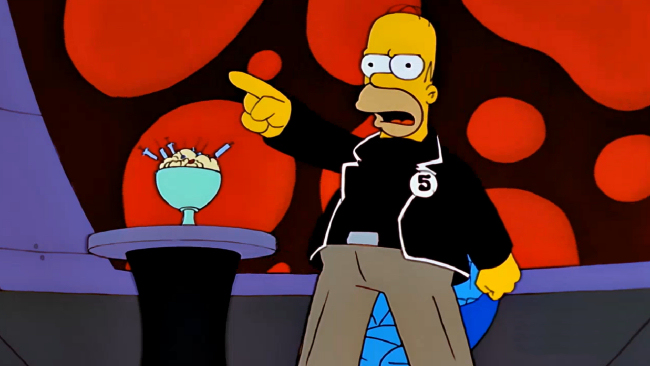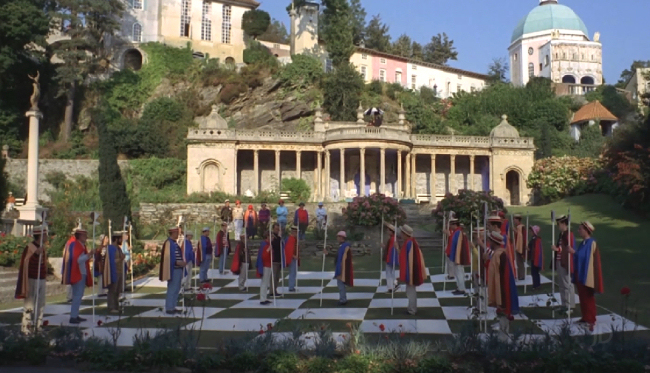LIFE FOR RUTH (1962)
aka: WALK IN THE SHADOW (USA/1966)
 John Harris (Michael Craig) and his wife Pat
(Janet Munro) have an eight year old daughter named Ruth. One day, their neighbor’s son Teddy goes with
Ruth and her parents to the nearby seaside cliffs to collect driftwood for
Ruth’s grandfather. Other children on
the beach kick Ruth’s ball into the water, so Teddy decides they should take a
nearby rowboat out to retrieve it.
John Harris (Michael Craig) and his wife Pat
(Janet Munro) have an eight year old daughter named Ruth. One day, their neighbor’s son Teddy goes with
Ruth and her parents to the nearby seaside cliffs to collect driftwood for
Ruth’s grandfather. Other children on
the beach kick Ruth’s ball into the water, so Teddy decides they should take a
nearby rowboat out to retrieve it.
The kids soon find themselves in rough waters, which
threaten to crash the small boat against jagged rocks. Ruth screams for her father, as he makes his
way down the cliffs to them. Teddy falls
overboard, so John swims over to him first.
He manages to get the boy over to a rescue boat, then swims back to
rescue Ruth. But by the time he gets to
her, she is in the water with a head wound.
 Next, John and Pat are in a hospital, waiting for news of
Ruth’s condition. Teddy is fine and sent
home, but Dr. Brown (Patrick McGoohan) informs them that Ruth has lost a lot of
blood, and is in desperate need of a blood transfusion.
Next, John and Pat are in a hospital, waiting for news of
Ruth’s condition. Teddy is fine and sent
home, but Dr. Brown (Patrick McGoohan) informs them that Ruth has lost a lot of
blood, and is in desperate need of a blood transfusion.
As soon as John hears this, he says she “mustn’t have a
blood transfusion”. Dr. Brown is shocked
to hear that the “giving and taking of blood” against John’s religion. Brown tells him that they aren’t “living in
the dark ages”. Dr. Brown leaves the
room in a hurry to get Dr. Harvard to help plead his case, and Pat pleads with her husband to allow the transfusion.
 The doctors return, but Dr. Harvard tells the
unrelenting parents they need to sign a form absolving the hospital from all
blame if Ruth dies. Brown continues to
plead with the couple, to no avail.
The doctors return, but Dr. Harvard tells the
unrelenting parents they need to sign a form absolving the hospital from all
blame if Ruth dies. Brown continues to
plead with the couple, to no avail.
John and Pat go home, and Brown takes the opportunity to set
up a transfusion anyway. He feels it is
his decision to make, not the parents’. He tries to contact the head of the hospital
for permission, but can’t. Harvard tells
him without Marshall
At home, John consoles his wife, telling her in the eyes of
God, and by His law, they are doing right.
John firmly believes Ruth will be alright. But as soon as she is alone, Pat runs to the
hospital to see Dr. Brown, and tells him to go through with the blood
transfusion. But it is too late. Brown drives Pat back home, and she confronts
her husband. “I saw her die” she tells
him.
 From this point, the plot revolves around the relationship
between John and Pat (strained, due to Pat not having been born into her
husband’s religion, and therefore easily doubting it’s teachings), and Dr.
Brown trying to get what he feels is justice for Ruth, in order to prevent
other children from dying due to what he feels are fanatical religious beliefs.
It all culminates in the father's trial under a British child-cruelty law.
From this point, the plot revolves around the relationship
between John and Pat (strained, due to Pat not having been born into her
husband’s religion, and therefore easily doubting it’s teachings), and Dr.
Brown trying to get what he feels is justice for Ruth, in order to prevent
other children from dying due to what he feels are fanatical religious beliefs.
It all culminates in the father's trial under a British child-cruelty law.
(I am not describing the second half of the film as, really,
it should be watched fresh and the viewer allowed to form their own opinions on
the topic.)
--------------------------------------------------------------------------------------------------------------------------
 |
| Munro pleads with McGoohan... just a slight height difference! |
I have to admit, knowing what the film was about, I wasn't
really looking forward to watching it.
But since it had Patrick McGoohan's, I sought it out and did indeed
watch the whole film. It actually went
by rather quickly, meaning it wasn't the chore I expected it to be.
Not only is the topic of religious freedom covered, but also
the idea of The State having more control over people's children than parents. In
the film, Dr. Brown mentions more than once he feels the State should be able
to step in and give treatment to a child regardless of parents' views. This premise feels very modern, given events
such as the Justina Pelletier case in Boston and
the Charlie Gard situation in England
The film never flat out tells us just what Ruth's parents
religion is, and while this does seem a little odd, I am guessing this was done to
protect the studio from libel. But it
appears the Harris family is Jehovah's Witnesses. Other characters are
identified as Jewish, Catholic, and Church of England
Having all these religions mixed into one film could have
been asking for real trouble, but in the end, the viewer gets the point of the
story, without their own religion being insulted. No one is ever actually
proven right or wrong. You can side with whichever character you wish, for the
most part. This is one reason I found the film palatable. Only the most fanatical may be offended.
As for production, there are some interesting shots showing
ominous skies and seas, interesting camera angles, etc. Acting is good overall,
Harris being perfect as the father. Munro was a bit "weepy" for my
tastes, but her portrayal of a conflicted mother and wife is for the most part
not too "syrupy". McGoohan
plays Dr. Brown in a very quiet and restrained manner. I expected at least one
major burst of anger from him (ala "Danger Man" or
"Prisoner"), but he kept things low-key. In fact, his first batch of
lines are delivered so softly I had to turn up the volume to hear them! One wonders what famously Catholic McGoohan
personally thought about the film’s subject.
All in all, I'd say this was a rather dark, but well made
film of a touchy topic, which is handled fairly and doesn't insult or take
sides. I'd like to have seen a little more "fire" from the main
characters in certain scenes, but that's just one person's opinion.
If you'd prefer not to watch this film as a lowish quality online copy, it is available as a Region 2 (non-US) DVD from Network in the UK.
Teddy and Ruth confront the boys who kicked their ball into the sea
John and Pat await news of Ruth's condition
Dr. Brown can't believe his ears... no transfusion??
Dr. Brown tells his boss he intends to get justice
"You psalm singing bastard..." Pat's parents learn just why Ruth died
Coming to her husband's defense after Ruth's funeral...
... but Pat can't make herself enter the meeting hall for the service
A Jew, a Catholic, and a doctor discuss if it is right to take Harris to court
John listens to witnesses
Dr. Brown speaks his mind on the stand












































































